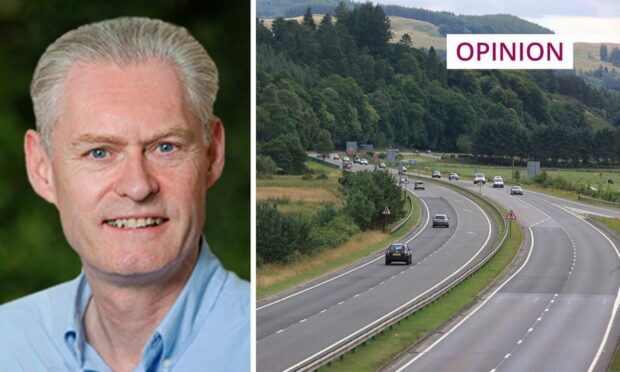It’s been a bitter pill to swallow but it’s been blatantly obvious for some time now that the A9 would never be fully dualled from Perth to Inverness by 2025.
Despite the continuous focus on the road in the media and at Holyrood, the Scottish Government has simply been unable to deliver on one of their key promises.
It’s not just about money, although ring-fenced funding would have helped, but they also failed to accelerate the planning and consultation processes to try and at least give themselves a fighting chance of meeting the target.
No one wants a road being built through their backyard, and the A9 traverses some very sensitive landscapes, but the need for the road was well proven, everyone wanted it, and so why not streamline some of the never-ending enquiries?
Dual carriageways are safer
So what does this mean for future users of the most high-profile road in Scotland?
It means more years of delays due to roadworks, and it means more deaths and injuries.
Why?
Simply because dual carriageways are safer than single carriageways.
The average speed cameras and higher speed limit for HGVs have helped reduce casualties but they will creep up again as traffic levels rise, as no camera can solve the problems caused by bad driving.
Dualling all but eliminates the potential for driver error that causes head-on crashes, and grade separated junctions remove deadly right-turn mistakes.
Difference between life and death
So what about the promised short improvement measures being brought in because of the recent spike in deaths on the route?
Well the cameras will continue to control the most excessive speeding and the simple housekeeping of improving signs, markings and driver information has been proven to deliver small improvements in driver behaviour that might just make the difference between life and death in certain locations.
The use of more electronic message signs has also been proposed with a focus on the transition from dual to single carriageways.
Government must take responsibility
I also think a quick review of the bypassed villages policy that stops the development of roadside services on the A9 is now long overdue.
Drivers simply won’t leave the route to visit places that they don’t know for certain will have the facilities they want, when they want them.
More stopping locations by the road with toilets, attractive picnic areas and new stops for lorry drivers would surely all help reduce fatigue-related crashes.
But, ultimately the biggest short-term gains in road safety will come from drivers themselves not setting reasonable journey times and not behaving so badly when the short dual carriageway sections end.
The Scottish Government must take responsibility for its long-term strategic failure, but day-to-day it is drivers who have to take personal responsibility for their own safety.
Neil Greig is policy and research director at the Institute of Advanced Motorists and a member of the A9 Safety Group.


